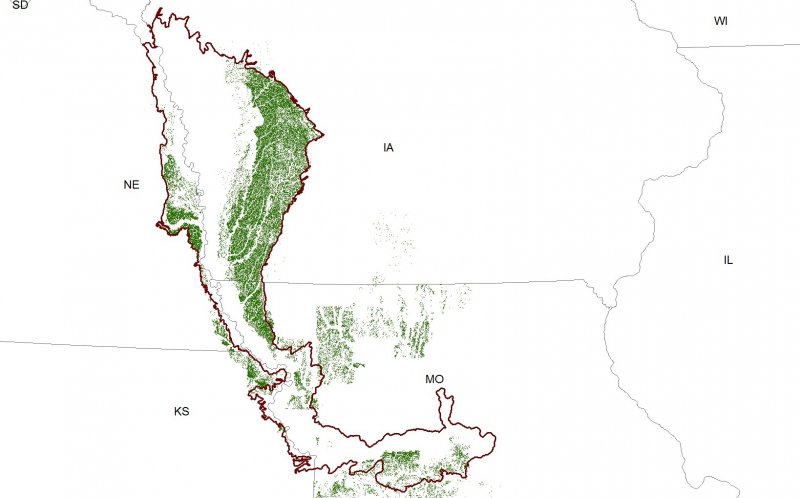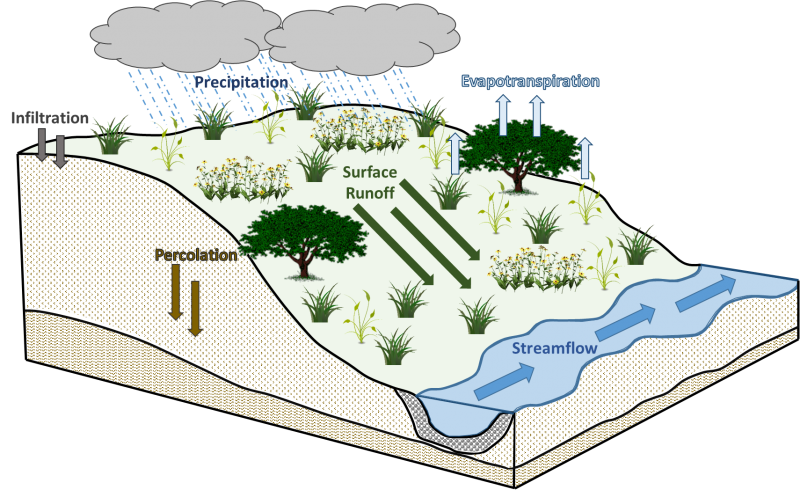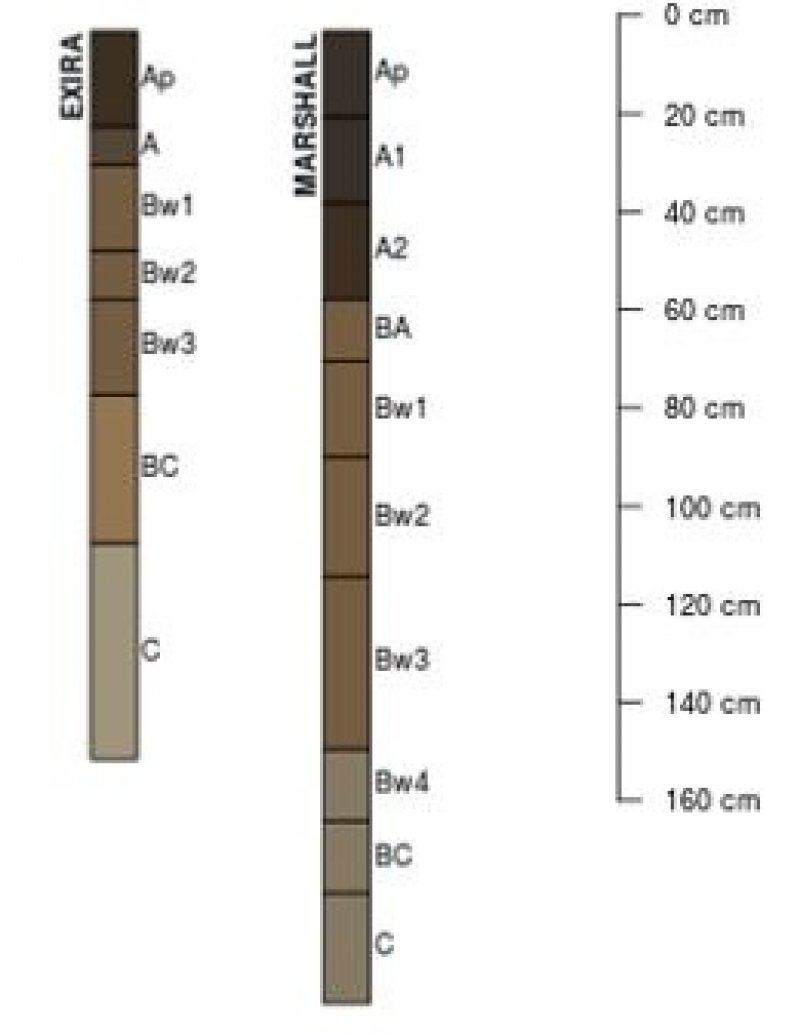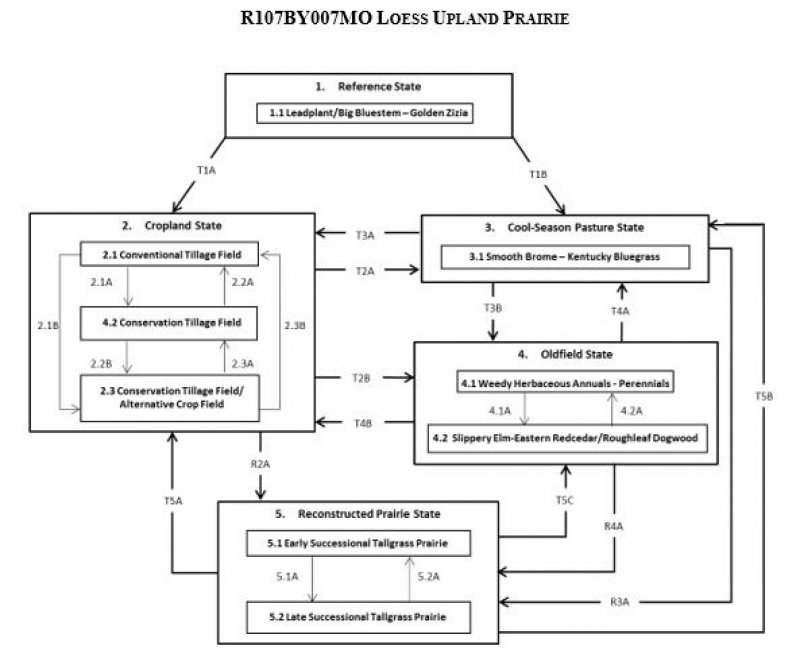
Natural Resources
Conservation Service
Ecological site R107XB007MO
Loess Upland Prairie
Last updated: 5/21/2020
Accessed: 11/21/2024
General information
Provisional. A provisional ecological site description has undergone quality control and quality assurance review. It contains a working state and transition model and enough information to identify the ecological site.
Figure 1. Mapped extent
Areas shown in blue indicate the maximum mapped extent of this ecological site. Other ecological sites likely occur within the highlighted areas. It is also possible for this ecological site to occur outside of highlighted areas if detailed soil survey has not been completed or recently updated.
MLRA notes
Major Land Resource Area (MLRA): 107X–Iowa and Missouri Deep Loess Hills
The Iowa and Missouri Deep Loess Hills (MLRA 107B) includes the Missouri Alluvial Plain, Loess Hills, Southern Iowa Drift Plain, and Central Dissected Till Plain landform regions (Prior 1991; Nigh and Schroeder 2002). It spans four states (Iowa, 53 percent; Missouri, 32 percent; Nebraska, 12 percent; and Kansas 3 percent), encompassing over 14,000 square miles (Figure 1). The elevation ranges from approximately 1,565 feet above sea level (ASL) on the highest ridges to about 600 feet ASL along the Missouri River near Glasgow in central Missouri. Local relief varies from 10 to 20 feet in the major river floodplains, to 50 to 100 feet in the dissected uplands, and loess bluffs of 200 to 300 feet along the Missouri River. Loess deposits cover most of the area, with deposits reaching a thickness of 65 to 200 feet in the Loess Hills and grading to about 20 feet in the eastern extent of the region. Pre-Illinoian till, deposited more than 500,000 years ago, lies beneath the loess and has experienced extensive erosion and dissection. Pennsylvanian and Cretaceous bedrock, comprised of shale, mudstones, and sandstones, lie beneath the glacial material (USDA-NRCS 2006).
The vegetation in the MLRA has undergone drastic changes over time. Spruce forests dominated the landscape 30,000 to 21,500 years ago. As the last glacial maximum peaked 21,500 to 16,000 years ago, they were replaced with open tundras and parklands. The end of the Pleistocene Epoch saw a warming climate that initially prompted the return of spruce forests, but as the warming continued, spruce trees were replaced by deciduous trees (Baker et al. 1990). Not until approximately 9,000 years ago did the vegetation transition to prairies as climatic conditions continued to warm and subsequently dry. Between 4,000 and 3,000 years ago, oak savannas began intermingling within the prairie landscape. This prairie-oak savanna ecosystem formed the dominant landscapes until the arrival of European settlers (Baker et al. 1992).
Classification relationships
Major Land Resource Area (MLRA): Iowa and Missouri Deep Loess Hills (107B)
USFS Subregions: Central Dissected Till Plains Section (251C); Loess Hills (251Cb) Subsection (Cleland et al. 2007).
U.S. EPA Level IV Ecoregion: Steeply Rolling Loess Prairies (47e), Rolling Loess Prairies (47f), Nebraska/Kansas Loess Hills (47h)
Biophysical Setting (LANDFIRE 2009): Central Tallgrass Prairie (4214210)
Ecological Systems (National Vegetation Classification System, Nature Serve 2015): Central Tallgrass Prairie (CES205.683)
Eilers and Roosa (1994): Loess Hills
Iowa Department of Natural Resources (INAI nd): Southern Mesic Prairie
Missouri Natural Heritage Program (Nelson 2010): Mesic Loess/Glacial Till Prairie
Nebraska Game and Parks Commission (Steinauer and Rolfsmeier 2010): Upland Tall-Grass Prairie
Plant Associations (National Vegetation Classification System, Nature Serve 2015): Andropogon gerardii – Sorghastrum nutans – (Sporobolus heterolepis) – Liatris spp. – Ratibida pinnata Grassland (CEGL002203)
White (1983): Iowan Erosion Surface Upland Type
Ecological site concept
Loess Upland Prairies are generally located within the green areas on the map (Figure 1). They occur on hillslopes, ridges, and interfluves. Soils are Inceptisols and Mollisols that are somewhat-poorly to well-drained and very deep, formed from loess with a slightly acidic (decreased pH) to slightly alkaline (increased pH) environment. These fine-silty, fertile soils have high soil uniformity resulting in increased nutrient- and water-holding capacity, increased organic matter retention, and good soil aeration that allows deep penetration by plant roots, which generally results in high plant productivity (Catt 2001).
The historic pre-European settlement vegetation on this site was dominated by a variety of tallgrass prairie species. Big bluestem (Andropogon gerardii Vitam) is the dominant monocot species, while leadplant (Amorpha canescens Pursh) and golden zizia (Zizia aurea (L.) W.D.J. Koch) are important indicators for the ecological site. Herbaceous species typical of an undisturbed plant community associated with this ecological site include Bicknell’s sedge (Carex bicknellii Britton), prairie dropseed (Sporobolus heterolepis (A. Gray) A. Gray), stiff sunflower (Helianthus pauciflorus Nutt. ssp. pauciflorus), and stiff coreopsis (Coreopsis palmata Nutt.) (Drobney et al. 2001; Ladd and Thomas 2015). In addition to leadplant, Jersey tea (Ceanothus herbaceus Raf.) and prairie rose (Rosa arkansana Porter) are common shrubs that can be found scattered throughout the prairie. Fire was the primary disturbance factor that maintained this site, while drought and large mammal grazing were secondary factors (Kennedy 1970).
Relative to other prairie ecological sites in the MLRA, Loess Upland Prairies have high average clay content and overtop a somewhat restrictive paleosol which slows the rate of infiltration. As a result, Loess Upland Prairies are moister than associated prairie ecological sites as evidenced by the frequency of species with lower wetness coefficients (Drobney et al. 2001).
Associated sites
| R107XB027IA |
Calcareous Till Upland Prairie Glacial till soils including Burchard, Liston, and Steinauer |
|---|---|
| R107XB008MO |
Loamy Footslope Savanna Loess soils on footslopes, including Castana, Colo, Danbury, Deloit, Ely, Judson, Napier, Nodaway, Olmitz, Udarents, and Udorthents |
Similar sites
| R107XB027IA |
Calcareous Till Upland Prairie Calcareous Till Upland Prairies are similar in general species present but soils contains no carbonates, are derived from glacial till, and only occurs on shoulders and backslopes |
|---|---|
| R107XB012MO |
Calcareous Loess Upland Prairie Calcareous Loess Upland Prairies are similar in landscape position but parent material is calcareous loess |
| R107XB006MO |
Calcareous Loess Exposed Backslope Prairie Calcareous Loess Exposed Backslope Prairies are similar in landscape position but only occurs on south and west aspects, is drier as evidenced by a more xeric species composition, and parent material is calcareous loess |
| R107XB002MO |
Deep Loess Upland Prairie Deep Loess Upland Prairies are similar in landscape position but species composition is less mesic |
Table 1. Dominant plant species
| Tree |
Not specified |
|---|---|
| Shrub |
(1) Amorpha canescens |
| Herbaceous |
(1) Andropogon gerardii |
Click on box and path labels to scroll to the respective text.





